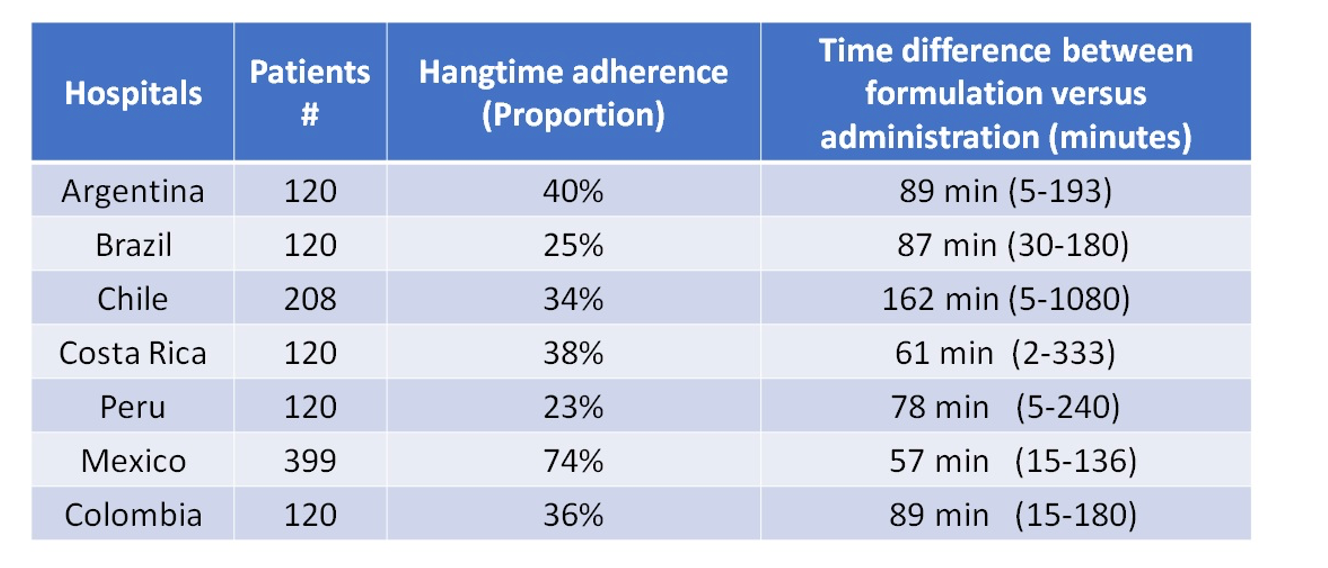From Prescription to Treatment: Decreasing the “Hang-Time” of IV Administration of Antimicrobials
How the development of antimicrobial stewardship programs can be an effective strategy for beginning to reduce this critical timing for patients in ICUs.
Logistics and employee silos in medical settings can sometimes unintentionally delay the time from when a prescription for an antimicrobial is ordered to the time the treatment is given to the patient. This can be especially challenging and concerning in cases for patients in the intensive care unit (ICU) who may be dealing with difficult-to-treat infections or may be at-risk for sepsis, which can lead to a greater mortality rate, so time-to-treat is critical.
In fact, studies around the development of septic shock of severely critical patients have shown the time-to-treatment as being a strong predicator of survival.
“Every hour of delayed effective antibiotic increases mortality by 8%,” said Debra A. Goff, PharmD, FIDSA, FCCP, professor of Pharmacy, The Ohio State University.
Goff helped lead a team of investigators who examined the period of time between when the prescription was written to the administration of the antimicrobials were infused. They looked at the infusion of antibiotics across 7 Latin American countries’ ICUs that were implementing antimicrobial stewardship programs (ASP). The countries included in the study were Argentina, Brazil, Chile, Costa Rica, Peru, Mexico, and Colombia. The findings were presented as a poster, Antibiotic Stewardship Initiative to identify and optimize antibiotic administration hang-time in 7 intensive care units (ICU) hospitals in Latin America, at IDWeek.
The investigators defined hang-time compliant as antibiotic administration within an elapsed time of 1 hour from the time of the written antibiotic order was given. Any patient with a suspected infection in the ICU (sepsis and/or septic shock secondary to urinary, intra-abdominal, soft tissue infections and pneumonia), who had a first dose of the antibiotic was included.
The investigators evaluated 1207 prescriptions and the most common diagnosis was sepsis and septic shock from urinary and pulmonary sources. Hang time adherence was 38.5% (22.5%-74.0%). The time range was 2 minutes to 1080 minutes the investigators wrote.
“We were very surprised because the results [showed] that the hang-time adherence was less than 50%. In the worst-case scenario, the hand time adherence was just 22%,” stated the study’s presenting author, Christian J. Pallares, MD, MSc, Clínica Imbanaco grupo quirónsalud, Universidad El Bosque, Colombia.
“I think the results were shocking to some of the physicians, and they just couldn't comprehend—why did it take 18 hours to get the antibiotic? And having the pharmacist there to explain, here's what happened. And then the nurse, not being aware that the drug actually was delivered, you started to realize there's multiple steps in this process. And together, they developed strategies [around making this process better],” Goff said.
Hang Time Results By Country

Table courtesy: Study authors/ID Week
Stewardship’s Role in Hang-Time Compliance
One strategy to overcome this treatment challenge is through the utilization of ASPs, which can play a vital role in reducing the gap to IV administration.
In the study, a stewardship improvement protocol was developed creating a collaborative effort between physicians, pharmacists, and nurses. One of the interesting facets of the study was the development of ASPs in Latin America. Goff explained many pharmacists continue to work in a traditional way in these countries, so the adoption of the ASPs was a novel way to bring them into the fold as well as other support staff such as nurses.
“In many of these Latin American countries, pharmacists are still in primary dispensing roles, so they really don't work on a multidisciplinary team,” Goff said. “And I knew, as I've done in other countries, this is a really great way to start a stewardship initiative. And with their leadership, it succeeded in such a great way.”
Goff and Perez says they are planning another phase of the study where they really want to incorporate ways for the ASPs to decrease the hang-time and work towards a better adherence.
“We need to improve that, and we need to work as a team,” Perez said.
